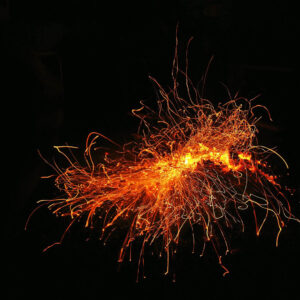Buergbrennen
How to say the winter goodbye? Luxembourg has its own answer and beloved custom: Buergbrennen. Each year on the Sunday after carnival people come together to watch a bonfire and enjoy “Mettwurscht”, “Ierzebulli” (sausage and pea soup) and mulled wine.
Despite the name, the Luxembourgers do not set fire to a castle. In the bonfire – made of old Christmas trees and wooden pallets – a cross plus an unfortunate straw man (possibly a symbol for the end of carnival) are lit.
What to prepare for Buergbrennen?
Usually, the local scouts or fire brigade organize the festival. They collect the old Christmas trees and wooden pallets for the construction. Traditionally, a cross is placed in the bonfire. Other villages build a construction that resembles an actual castle. The preparation does not end there. At the “Buergplatz” everyone will gather to watch the spectacle and enjoy hot food and drinks. A popular dish is of course Mettwurscht and Ierzebulli.
Some villages might also have a torchlight procession to the bonfire. In other places, a newly wed couple sets the “Buerg” on fire.

The end of winter is here
Buergbrennen or “Fête des Brandons” is observed in Luxembourg, as well as a few places in France and the German borderland (Eifel).
The festival at the beginning of lent represents the end of winter. Legend has it that the quality of the fire will determine the beginning of summer.
The word “Buerg”, according to some experts, has nothing to do with today’s meaning of the word (ie. castle). The latin “comburo” (=to burn) is a suspect for the origin. This would link Buergbrennen to the New-Year celebrations in the antique Rome.
Buergbrennen is next Sunday! So enjoy the fine tradition around the warming bonfire. Finally, the end of winter is here. On that note: Have a wonderful springtime!
